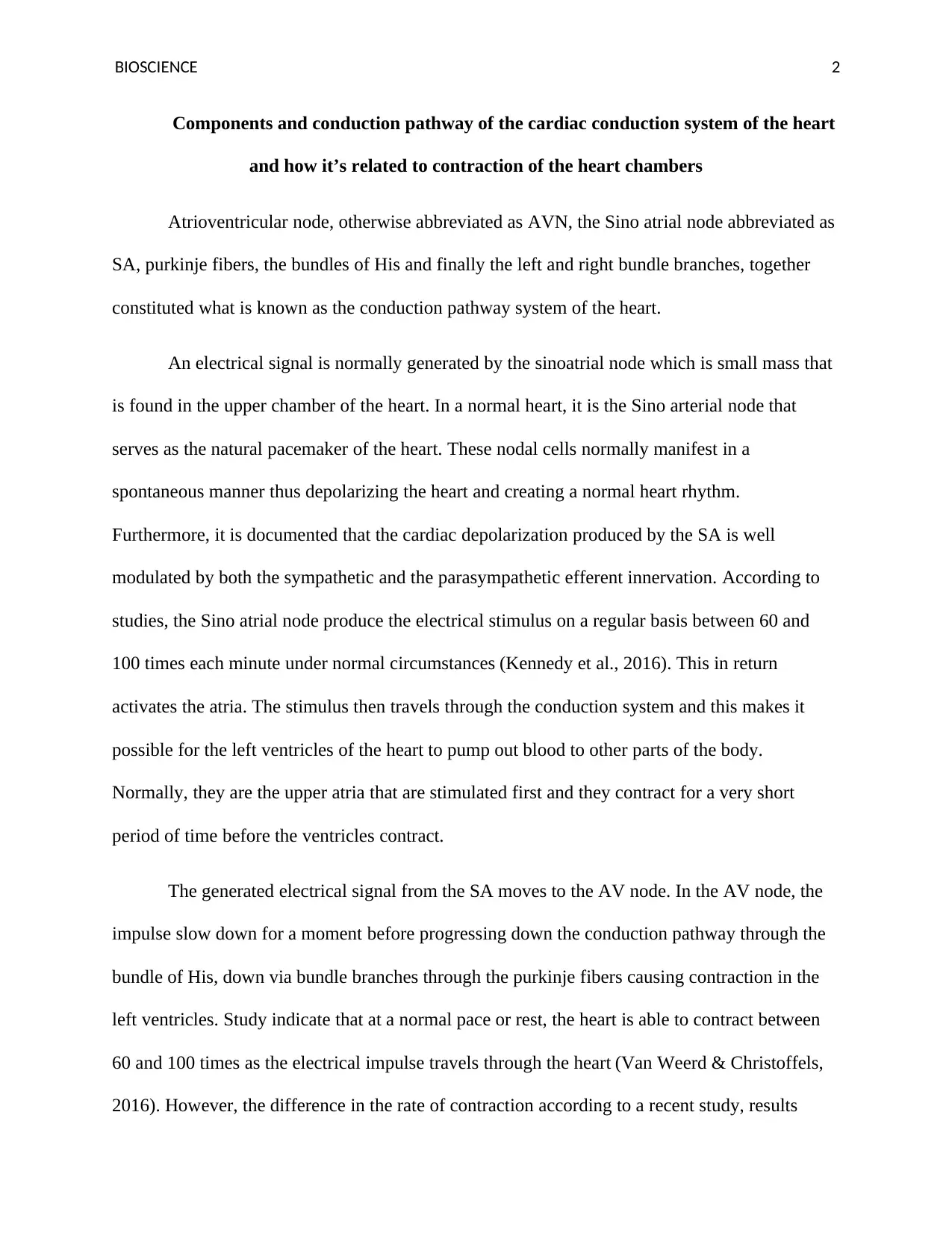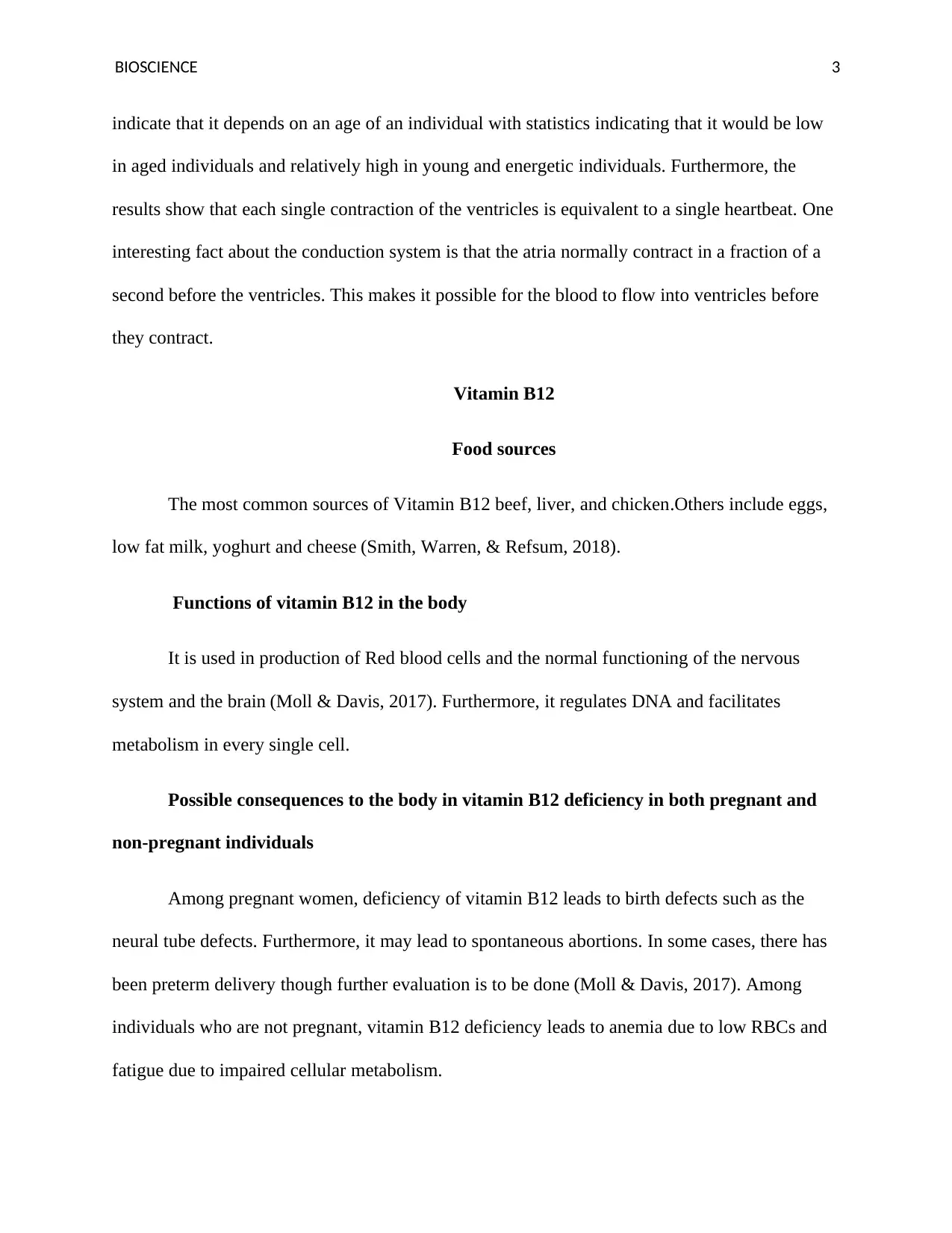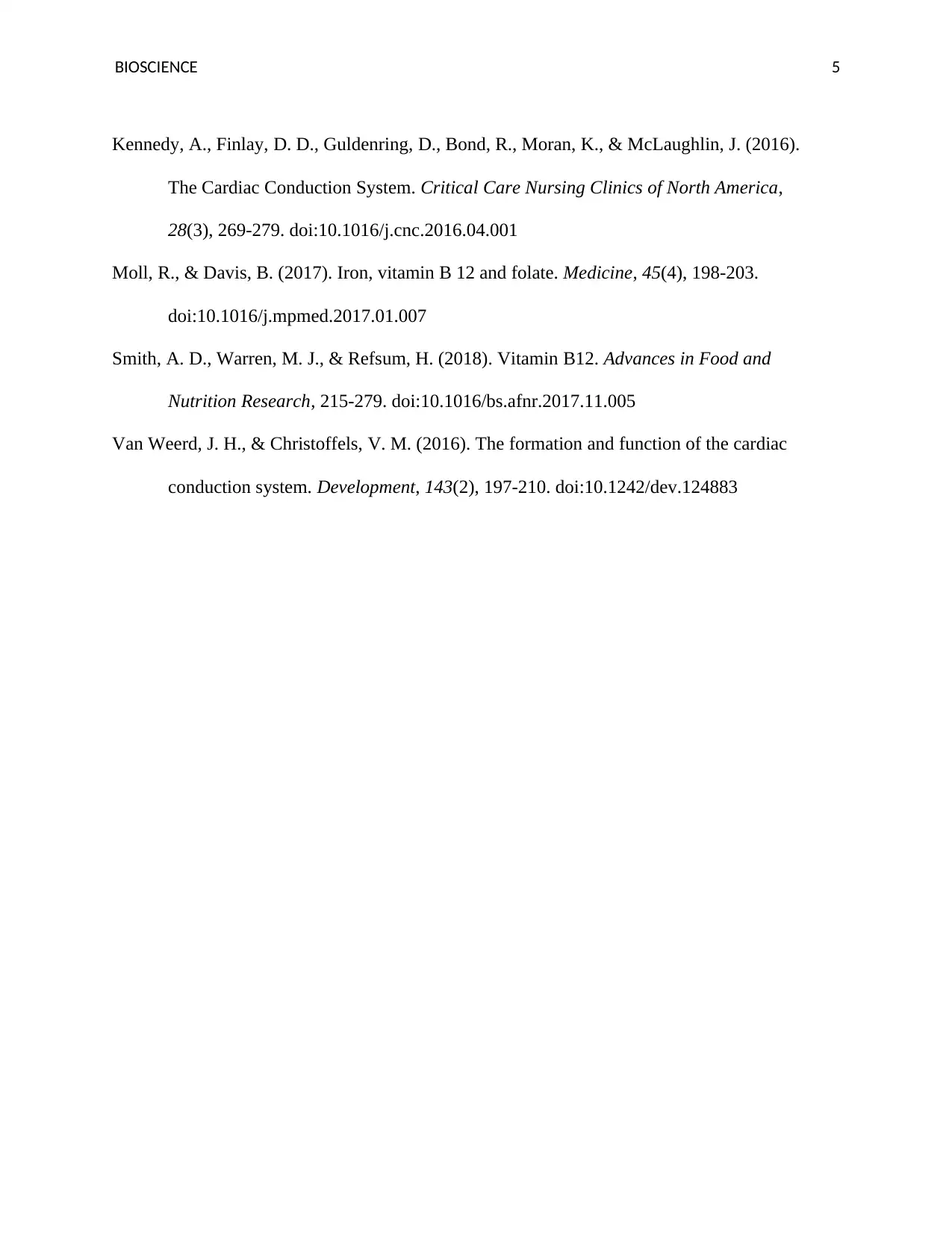School of Nursing Bioscience 1 (401002) Report: Heart & Vitamin B12
VerifiedAdded on 2022/12/26
|5
|848
|35
Report
AI Summary
This report, prepared for a Bioscience 1 course, examines two key topics: the cardiac conduction system and Vitamin B12. The first section details the components of the heart's conduction pathway, including the sinoatrial node, atrioventricular node, bundle of His, bundle branches, and Purkinje fibers, explaining their roles in generating and transmitting electrical signals to coordinate heart contractions. It also discusses the normal heart rate and the influence of age. The second section focuses on Vitamin B12, including its food sources (beef, liver, chicken, eggs, milk, yogurt, and cheese), its functions in the body (red blood cell production, nervous system and brain function, DNA regulation, and metabolism), and the consequences of its deficiency, such as birth defects in pregnant women (neural tube defects, spontaneous abortions, and preterm delivery) and anemia and fatigue in non-pregnant individuals. The report also identifies vegans as a group at risk for B12 deficiency. The report concludes with a list of cited references.
1 out of 5












![[object Object]](/_next/static/media/star-bottom.7253800d.svg)